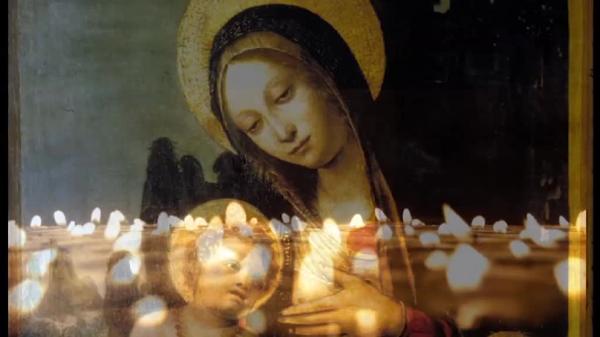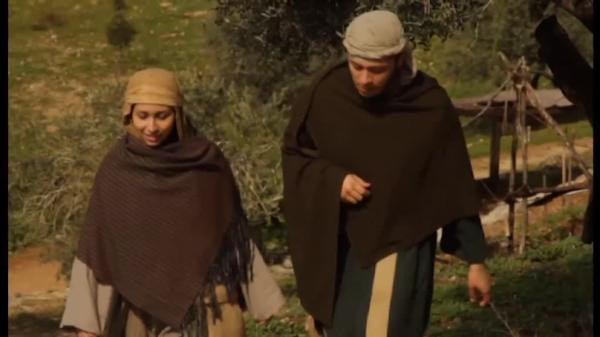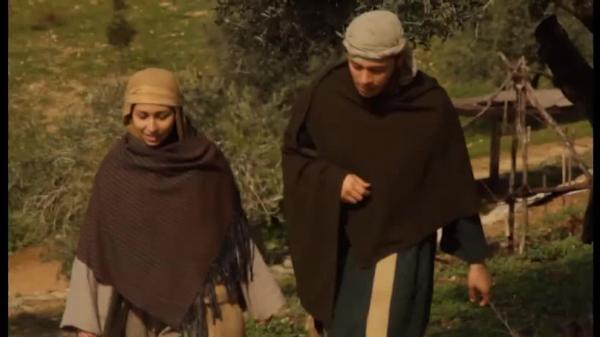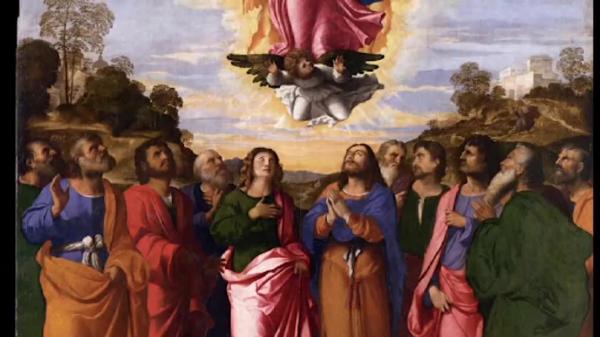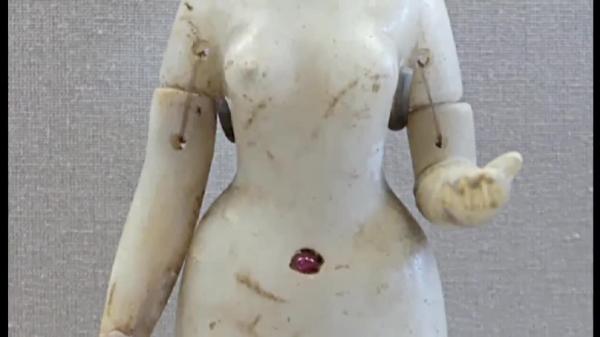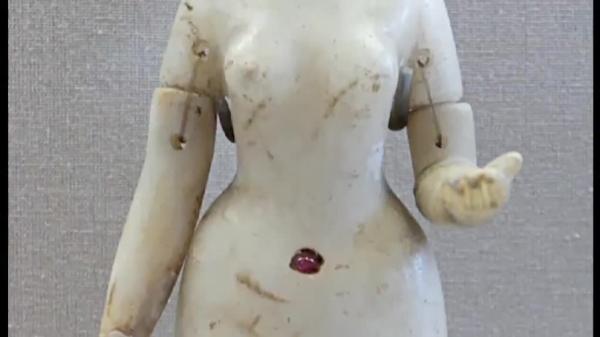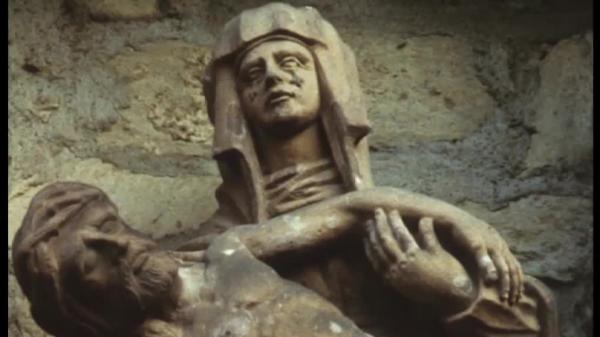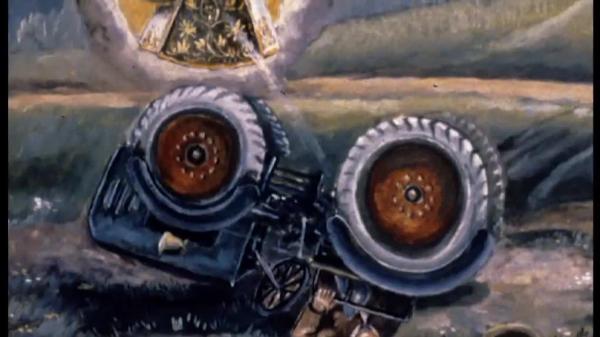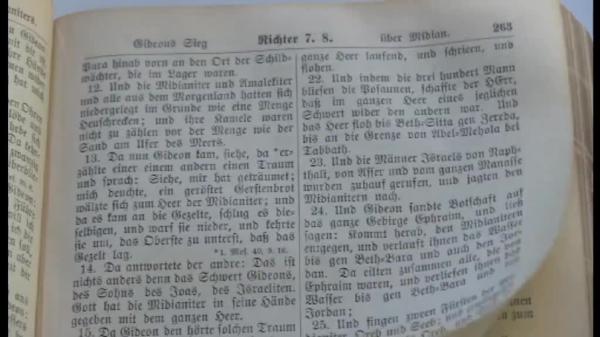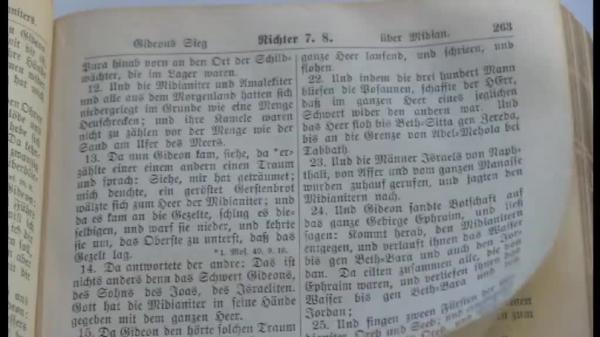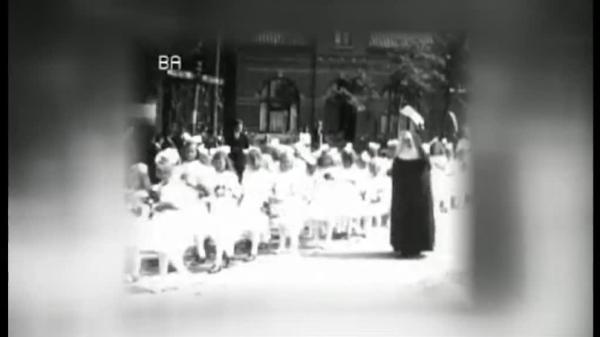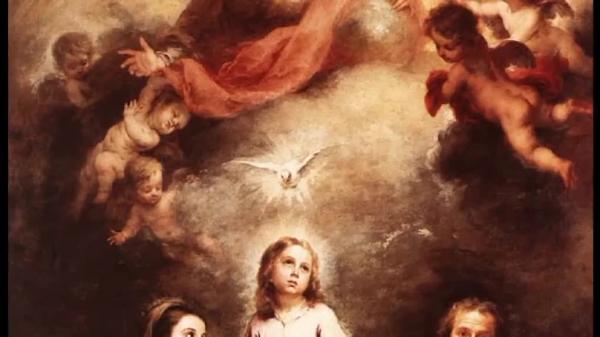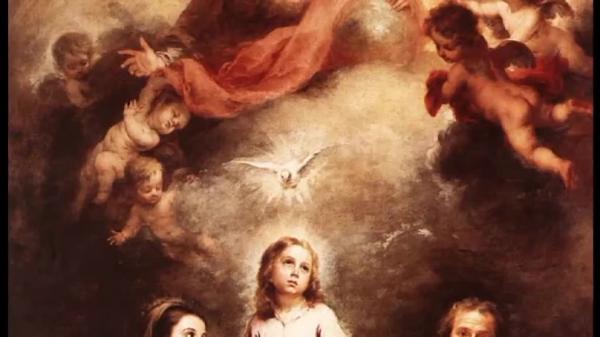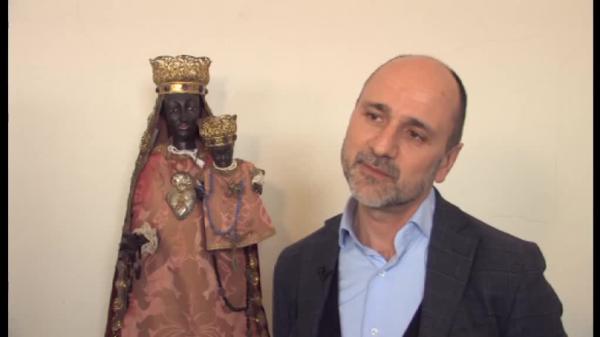Maria
Bilder im Wandel


Mary is the major female figure in the Bible. She is the saint, the patron saint of entire countries and nations. Countless are the prayers people have been directing to her for centuries and countless the people who put themselves under her protection. As with all saints, her figure has undergone changes during the centuries, various ideas are associated with her. However, images of Mary are also seen in a more controversial light: virgin birth, the serving, obedient handmaiden – pictures of a patriarchal religion? The history of Marian devotion begins in the Bible. 1. Mary in the Bible In the oldest Gospel according to Mark, Mary, the mother of Jesus, does not play a significant role yet. It is the Evangelist Matthew and then above all Luke, who assign a major role to Mary in the story of Jesus’ birth. The angel Gabriel is sent to the insignificant small town of Nazareth in Galilee and announces to Mary the birth of her son Jesus. Mary is a young woman and not married yet. In the patriarchal society of ancient Israel God chooses a young woman – he entrusts the coming Messiah to the young girl from Nazareth – not to the priests or rulers. Mary listens to the angel’s words and trusts in God’s instruction. The evangelist is not concerned in the first place with Mary giving birth to the Son of God but with Mary listening to the message and allowing God’s will to be done. Quote Pfarrer Andreas Ebert: “On the one hand, Mary is not a central figure but then, of course, she plays a very special role as the mother of Jesus at the Nativity in the New Testament. And not only because she is the mother but also in the way she accepts the role in the first place – by showing this willingness and openness although she does not quite understand what it is all about. And in spite of that, she says: ´Yes, it may happen. It shall be, I allow it.´ “ After the tale of Jesus’ birth, the figure of Mary disappears from the gospels. Only in a few places do the evangelists speak of the mother of Jesus again. Even at the crucifixion of Jesus, testimonies in the Bible vary – not every evangelist talks about the mother of Jesus under the cross. However: to the early Christians, Mary was a central figure of special veneration from the very beginning. Quote Dr. Christoph Kürzeder: “And from this outstanding position for the history of salvation also the veneration developed. She is one of the saints of the Church who were venerated early, really very early, and as a female figure of faith she is a very important figure from the very beginning, of course. This importance of course also comes from her life, her role as a companion – she did not just bring Christ into the world, she also educated him and accompanied him in the world. And thus she was nearest to him, too. This is of course important in worship as well. And Mary’s motherhood is of course a statement of what motherhood is all about: being a mother is a basic experience in life and therefore she also becomes this great advocate: people go to their mothers and ask them for something. She is this great advocate you go to more readily than to the topmost category, so to speak.“ 2. Origins of Marian Devotion During the first centuries AD, early Christianity came face to face with the gods of the ancient world and its various ideas and images. Everyone in the entire Mediterranean region knew of powerful and important goddesses. Some characteristics of these goddesses were transferred to Mary in the veneration of the people. The Babylonian goddess Astarte, who wears a crescent moon on her head – a symbol found in later depictions of Mary – or the Greek goddess Artemis wearing a crescent moon, too. The Egyptian goddess Isis, who is nursing her divine son, Horus here, is likely to have been especially influential. Quote Dr. Christoph Kürzeder: “Of course there are some paragons in the Mediterranean region. In Egypt, we have mainly Isis and the young Horus. This parallel is quite obvious in early Christianity. Here we have the type of the so-called ´Maria lactans´ in particular, which shows Mary breastfeeding her boy; the nursing Mother of God, which certainly goes back to ancient Egyptian models. Then we have of course the cult of Artemis in Asia Minor, which was very powerful, and it was not for nothing that Ephesus was an important place of worship – the place of Mary’s death and burial; but at the same time also the ‘place of worship of Artemis’ in antiquity.“ During the first centuries AD, early Christianity came face to face with the gods of the ancient world and its various ideas and images. Everyone in the entire Mediterranean region knew of powerful and important goddesses. Some characteristics of these goddesses were transferred to Mary in the veneration of the people. The Babylonian goddess Astarte, who wears a crescent moon on her head – a symbol found in later depictions of Mary – or the Greek goddess Artemis wearing a crescent moon, too. The Egyptian goddess Isis, who is nursing her divine son, Horus here, is likely to have been especially influential. Quote Dr. Christoph Kürzeder: “Of course there are some paragons in the Mediterranean region. In Egypt, we have mainly Isis and the young Horus. This parallel is quite obvious in early Christianity. Here we have the type of the so-called ´Maria lactans´ in particular, which shows Mary breastfeeding her boy; the nursing Mother of God, which certainly goes back to ancient Egyptian models. Then we have of course the cult of Artemis in Asia Minor, which was very powerful, and it was not for nothing that Ephesus was an important place of worship – the place of Mary’s death and burial; but at the same time also the ‘place of worship of Artemis’ in antiquity.“ Based on biblical tradition and ancient goddesses as role models, Christianity very early develops its special form of Marian devotion in popular religion. In the male-dominated Church, with a very strongly male-dominated image of God, it is Mary who represents the feminine aspect of Christianity. Quote Dr. Christoph Kürzeder: “Derived from Jewish tradition we have a strongly male-dominated image of God. And so Mary is seen already very early as the female side of God. She becomes very much a figure representing the concern for humans. God’s saving power through the saints becomes most strongly and clearly visible in Mary. She is the one who becomes an important contact person for all spheres of life, the most important advocate and helper in all needs.“ Quote Pfarrer Andreas Ebert: “I think it is this desire for warmth and also protection. People – above all women – have experienced a society which was wholly male-dominated, also a Church where men sometimes ruled brutally, where women had no roles or were just slaves, were married off or put into monasteries. Where there were few opportunities for women. And Mary was, I think, an image for women – but certainly also for men – to experience another aspect: not dominance but for example this protective cloak. Already in the Middle Ages there was this Madonna with a protective coat, with her warmth and security. This mercy, care and nearness could not really be imagined in a man, not even in a male God, because men had never been like that. I think there is a need, a deep need, in the human soul to integrate this motherly and feminine element in religion, too. And in Catholicism and Orthodoxy this happened via Mary, so to speak.“ 3. Reformation and Criticism of the Veneration of Saints The importance of Mary continued to increase in popular piety. But during the Reformation at the latest, also criticism of the veneration of saints was voiced. Had the saints – and in particular Mary – not assumed an importance in veneration that was due only to God? Luther did not outright reject the memory of particular holy personalities but opposed the invocation of the saints. Because: “There is only one mediator between God and human beings, Jesus Christ.“ According to Luther, Mary could have a role as a model of faith. She herself, however, could neither create nor give salvation. Quote Pfarrer Andreas Ebert: „Luther was a great devotee of Mary, even after the Reformation. He had written a wonderful paper on the interpretation of a Magnificat, which is also praised by Catholics, in which he interpreted this text and talked in glowing terms of Mary. But of course not as a deity or almost deity but as a sister – a role model.“ As Mary loses her special status in the Reformed Churches, particular emphasis is placed again on the exclusive salvific power of Christ but the feminine aspect is lost in the process. Quote Protestant. expert: “In Protestantism there is no devotion to Mary. In a way, this is a shortcoming. There is actually no really good substitute – the feminine element virtually does not occur in this world of religious images.“ In the Catholic world the veneration of Mary remained central – in particular among the people. Entire pilgrimages and holidays were devoted to the “Mother of God“. People were convinced that Mary was the advocate for their concerns and needs, that Mary could be their help and support in all hardship. On so-called votive tablets, for example, people expressed their gratitude for Mary’s help. Official Catholic teaching, in contrast, was anxious to declare: it is not Mary who creates grace and salvation. She can give them by intercession as a saint but not ensure them herself. A distinction that was hardly accepted like that for worship among the people. Quote Dr. Christoph Kürzeder: “Theologians always point it out – and also in the tradition of pilgrimages the wording is always supposed to be: ‘I was helped through the intercession of Mary.‘ Of course, it mostly says Mary helped. This is a theological correction that is understandable from the viewpoint of theology but actually played no big role in the everyday belief of the people. Mary is simply seen as this mighty advocate and mostly nobody cares about dogmatic-theological accuracy.“ 4. Virgin Birth and Marian Dogmas Despite Mary’s uninterrupted appeal in popular religion, a more critical approach to biblical texts started in the course of the Reformation, with the Enlightenment. Especially accounts of miracles came to be more and more critically questioned. In this context also the virgin birth was challenged. How is it to be understood? The image of the Virgin Mary was central to many Christians. By then, Mary had come to be venerated as such all over the world. However, is it possible that in a rational world the doctrine of the virgin birth can be maintained, as it were, as a biological fact? Quote Pfarrer Andreas Ebert: “The virgin birth is of course not a Catholic doctrine but it was written in the Bible in the first place, several times in Mathew and Luke, that Jesus was born by a virgin. And of course many people have problems understanding this biologically. And nevertheless: this image of a birth not caused by a sexual act but by listening, by this openness, this attitude … there is something to it. Whether what this means is a good concept of virginity for our time – because to us this implies at once, of course, a rejection of sexuality or that it is better not to have sex, and even so, she gets a child … I think this is no longer comprehensible to many contemporaries today. In this respect, the actual spiritual message of this virgin birth is probably not so easy to convey nowadays. But it has a deep meaning.“ Despite Mary’s uninterrupted appeal in popular religion, a more critical approach to biblical texts started in the course of the Reformation, with the Enlightenment. Especially accounts of miracles came to be more and more critically questioned. In this context also the virgin birth was challenged. How is it to be understood? The image of the Virgin Mary was central to many Christians. By then, Mary had come to be venerated as such all over the world. However, is it possible that in a rational world the doctrine of the virgin birth can be maintained, as it were, as a biological fact? Quote Pfarrer Andreas Ebert: “The virgin birth is of course not a Catholic doctrine but it was written in the Bible in the first place, several times in Mathew and Luke, that Jesus was born by a virgin. And of course many people have problems understanding this biologically. And nevertheless: this image of a birth not caused by a sexual act but by listening, by this openness, this attitude … there is something to it. Whether what this means is a good concept of virginity for our time – because to us this implies at once, of course, a rejection of sexuality or that it is better not to have sex, and even so, she gets a child … I think this is no longer comprehensible to many contemporaries today. In this respect, the actual spiritual message of this virgin birth is probably not so easy to convey nowadays. But it has a deep meaning.“ Imparting the language and imagery of the Bible to a rational and enlightened society became more and more difficult. The doctrine of the “virgin birth“ was considered part of the body-hostile attitude of the Church. The immaculate and pure Mary moved to the centre of worship. In the 19th and the first half of the 20th centuries, Mary shaped the image of women and family patterns in a way. This finds expression in numerous Marian apparitions, pilgrimages but also Marian dogmas formulated by the Catholic Church. Quote Dr. Christoph Kürzeder “The 19th century tames Mary considerably. That is it assigns her a role based strongly on moral convictions and virtues. She conveys a subservient image of women, an image very much reduced to this aspect of humility. And this other aspect, that of a self-determined woman, can be found for example far more in the 18th century. The 18th century treats the idea of this strong woman far more freely, allows her to be strong.“ In 1950, Pope Pius XII finally pronounced the last Marian dogma – the doctrine of the bodily Assumption of Mary into heaven. After her death, Mary was accepted “with body and soul into the glory of heaven”. This doctrine followed the widespread veneration Mary had always enjoyed in Catholic popular piety but also led to criticism, for example from Protestant Christians. Quote Pfarrer Andreas Ebert: “To the dismay of Protestants, the great Protestant depth psychologist Carl Gustav Jung was absolutely delighted when the Assumption of Mary into heaven was dogmatised at the beginning of the 1950s and said: ‘Yes, on this symbolic level at last… the feminine is accepted into heaven. The feminine is somehow integrated in the deity – and this is what is missing.‘ He said the trinity of Father, Son and Holy Spirit was somehow male to us and actually we would need a quaternity, that is a four-fold image. And as a fourth factor the feminine would have to be included. Although we did not know the meaning of this dogma, the idea that Mary had a place in heaven, by God’s side, so to speak … well, on the deep-psychological level, he found it absolutely delightful!“ 5. Marian Image and Role of Women Against the background of societal controversy about the understanding of the role of women, the emergence of a feminist theology, more and more, the question moved into the spotlight whether Mary did not ultimately convey an image of women shaped by a male-dominated society. The question was asked whether Marian images were not, in fact, expressions of the role of women in society. Is the picture of the pure and submissive Mary, the obedient handmaiden, not also an image of women’s oppression? Quote Dr. Christoph Kürzeder: “I think an important aspect is that the Church does not only represent a male-dominated image of God but that it is also a male-dominated Church, where Mary is of course assigned very specific roles. And in the light of theological history, it is quite interesting how these roles change again and again. If you look at it today, there is no homogeneous picture. In piety, the 19th century is still prevailing but in theological controversy we have quite different departures. There is the ’new Eve’ who, in her self-determination, goes her own way self-confidently and, despite her humble ‘yes’, independently and voluntarily as a really strong woman.“ Quote Dr. Christoph Kürzeder: “Mary’s history shows that she was incredibly flexible. She has changed her image time and again. Whether she is the Queen of Heaven, Our Lady of Sorrows under the Cross or Our lady of Pity with her dead son in her arms or Mary in her role at the birth of Christ, the joyful event: throughout history Marian devotion has been concentrated on different focal points. Today, we have arrived at a point that is quite difficult because our Marian images are still shaped by the 19th century. The picture of the Immaculate Conception of Lourdes is still one of our leading images in the Catholic Church. And therefore, we have been in search for quite some time now for new images for this important figure of faith. Contemporary art is invited too, of course, to come up with ever new ideas and illustrate our requirements for this idea of a feminine, spiritually highly charged figure that can also be a role model in our lives. Of course, emotions play a very important role here, and also the changing image of women plays a significant role. Mary, too, is a single parent in a way. She represents a strong type of woman, actually a very modern type of woman, and insofar she is still able to change considerably again and again, throughout the ages.“ Images of Mary change. Already in the Bible the authors attributed different importance to her. In the course of Church history, Marian devotion has introduced a feminine element into a strongly male-dominated religion. Today, the challenge consists in finding a modern way of venerating Mary that corresponds to a modern image of women.

